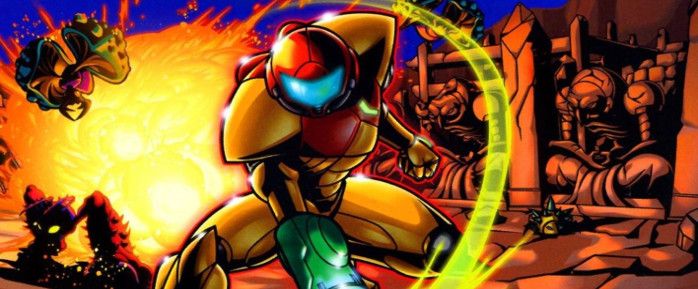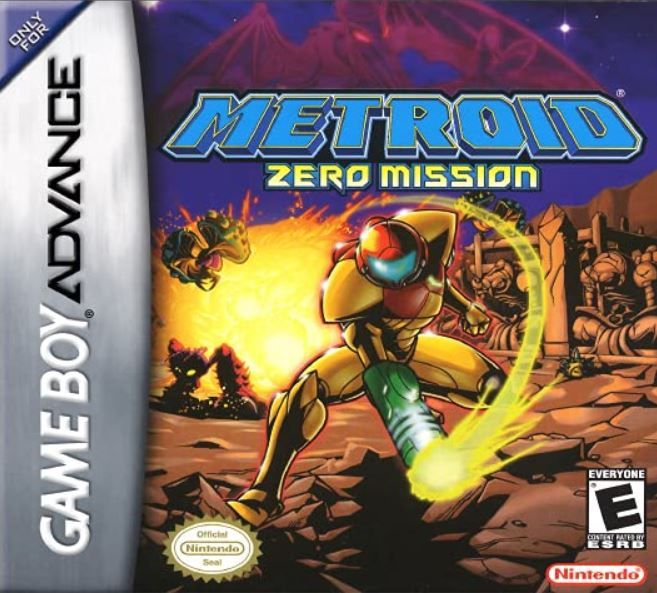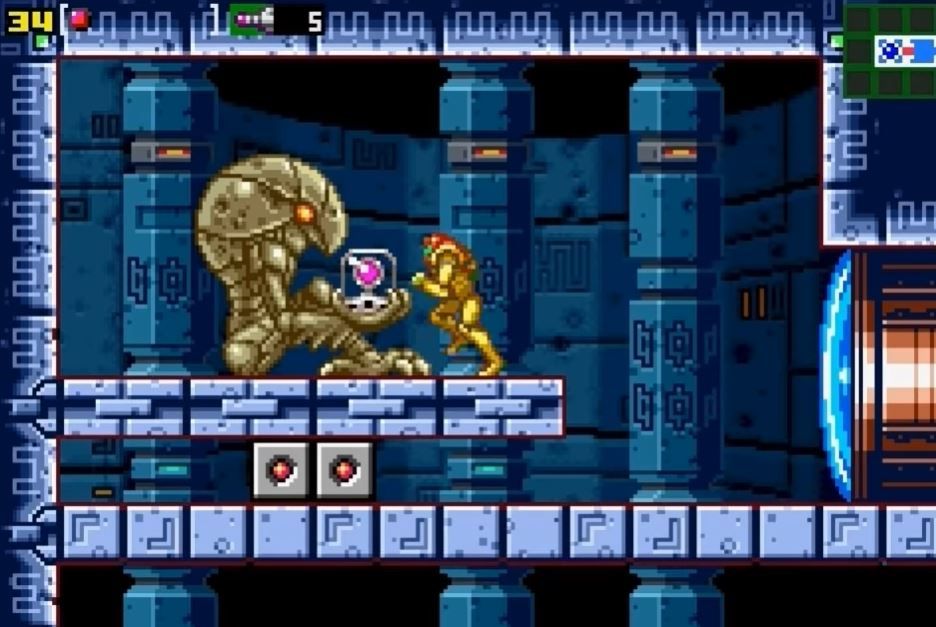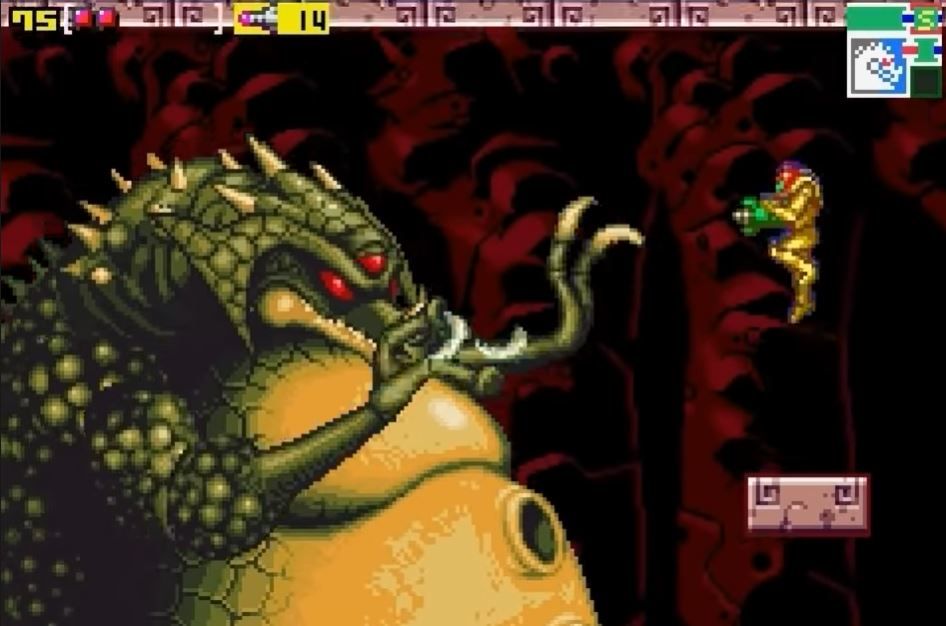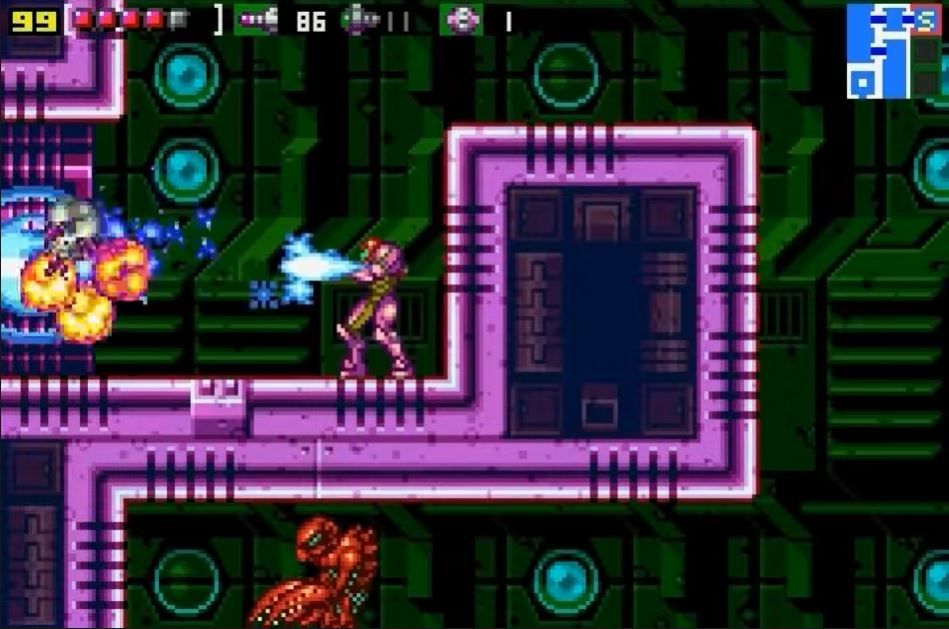Handheld gaming is more than a compromise of power and portability. Whether it’s the ability to play anywhere, multitask or hold an entire console in your hands, it’s a special experience consoles have never replicated. In a world where high resolutions and teraflops reign supreme, we take a look at a portable relic every month and reflect on what makes it memorable. Be warned, spoilers may occasionally populate these articles.
Metroidvanias have become so popular it's easy to use the term to describe a game without consciously thinking about either Metroid or Castlevania. This is a testament to how great and influential some of the games responsible for that portmanteau are. The original Metroid is considered one of the best NES games since its initial release in 1986, but before the age of virtual consoles and with emulators being frowned upon with the passage of each year, the original Metroid became increasingly less accessible. That is until 2004, when Nintendo decided they needed something that would generate a lot of revenue without having to development a brand new game. And so Game Boy Advance owners got to enjoy a revamped version with Metroid: Zero Mission.
Metroid: Zero Mission is more than simply a port of the original Metroid with a fresh coat of paint. The original Metroid is classic that doesn't need a whole a lot of improvement, but games in the '80s were a lot shorter than in the 21st century. There's a variety of new content added in Zero Mission, but the biggest change is a new area called Chozodia which appears to the be the ruins of the Chozo temple on Zebes. This area does have design concepts that hints these may have been the aliens that helped build the great pyramids, but this is purely speculation. This area is protected by a new boss, Mecha Ridley. Think Mecha Godzilla but you know, Ridley instead of Godzilla.
Metroids are alien lifeforms that act like external parasites. They latch onto a victim and drain their life energy until only a lifeless corpse remains. These creatures were hunted by Zebesian Space Pirates with the intention of exposing them to beta rays to turn them into a biological weapon. The Galactic Federation found a Space Pirate hideout tucked away on Zebes so they sent Samus Aran, the greatest bounty, to Zebes to deal with the piracy problem and destroy Mother Brain. In addition to the new area the story was fleshed out more with new cutscenes.
Being as Metroid: Zero Mission makes up half of metroidvania, it should be obvious that this is a nonlinear game. Something great about Metroid is it begins with what appears to be a choice at whether the player can go right or left. Most games in 1986 have the player going from left to right, which if the player goes right based on just about every other platformer of the time they won't get very far. Going left also leads to a dead end, but it also has the morph ball that allows Samus to roll into a tiny ball and reach otherwise inaccessible places. This opening is teaching the player how to approach Metroid, by seeking out alternate paths to find the necessary item in order to continue progressing.
Metroid: Zero Mission employs some rather unorthodox traversal methods. The ice beam was always a fun way to get around by freezing enemies by turning them into stepping stones and platforming between the frozen aliens to reach inaccessible areas. One of the improvements over the original Metroid is that Samus can now carry several different weapons and switch into whichever one is the most appropriate for a given situation. But the most unorthodox means of travel is using the morph ball to give Samus a more buoyant quality, where her suit protects her from explosions but the force is able to propel her to other out of reach areas. It can be tricky to time multiple bombs properly to get to out of the way places, but a little practice is all it takes.
Metroid: Zero Mission is as much about killing the metroid threat as it is about exploring Zebes. Zebes is a rather complex planet that's divided into Crateria, Brinstar, Tourian, Maridia, Norfair and Chozoida. There's order to the progression, but Samus is free to wander off the beaten path which is actually encouraged. Super missiles and other power ups are hidden throughout the planet and using her blaster as a way to open passageways or expose bombable areas is a good way to get around. Metroid: Zero Mission is full of hostile alien lifeforms to kill, but it's also a great place to explore and try to uncover secrets. The original Metroid put players in an alien world and filled them with a sense of awe and wonder, and this quality remained present in the handheld remake.
The graphics received an obvious facelift, which after eighteen years between original and remake one would hope that was the case. But beyond just having everything look prettier, some design changes enhanced the game. Kraid's 8-bit model just doesn't do him justice in the original NES version, but on GBA his sprite takes up several screens, finally giving the rotund reptile the proper proportions to intimidate the galaxy's greatest bounty hunter. The added items, areas, cutscenes and suits make Metroid: Zero Mission feel like a more complete version of what the original game was trying accomplish.
Metroid: Zero Mission is an example of how a game remake should be done. It redoes the visuals, remixes the music, adds additional content, but most of all respects the original game. Expanding on the base game is fine when done properly, which is in a way that builds on and complements the source material. Extra content for the sake of extra content just feels like extraneous padding, which I'm sure we can call think of a few remakes that are guilty of such. Metroid: Zero Mission was made in an attempt to improve on a classic, which is never a small feat, but one most would say the development team pulled it off successfully. And for those who want the original Metroid, it's available as a bonus ROM when the player completes Zero Mission.
Get more Pocket Power. Click here to view every Pocket Power so far and prepare for a pocket-sized stroll down memory lane.

